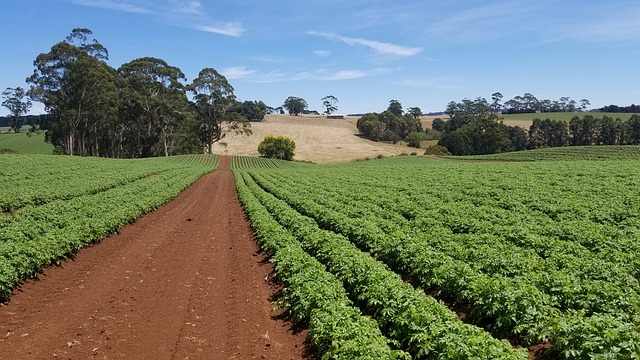October 5, 2021
By Lynda Kiernan-Stone, Global AgInvesting Media
Farmland investor LandFund Partners announced the launch of the LFP Soil Enrichment Fund (SEF) – an open-end structured fund currently holding 20,100 cultivated acres of land valued at $128 million. Eventually, LFP aims to grow the SEF portfolio to more than $1 billion in assets.
But how exactly does it work?
LFP has partnered with AgriCapture and Climate Action Reserve to generate carbon credits from the farmland held by the SEF. The initial 20,100 acres are already part of the first large-scale carbon credit scheme in the Mississippi River Valley, and most of the SEF farms will be eligible to earn carbon credits beginning in 2022.
“Our increasing scale allows us to negotiate better rents, secure lower financing costs and get a first look at new properties – all of which leads to higher returns for our investors,” said John Farris, founder and CEO, LFP. “We will employ best-in-class regenerative agricultural practices to create healthier soils and more climate-friendly farms. This is not only the right thing to do, but it will also make our land more valuable.”
The farmers working within SEF’s portfolio are integrating production practices that improve soil health while also sequestering and reducing greenhouse gasses. These regenerative farming methods have been proven through studies and research conducted by organizations such as The Soil Health Institute, Sustainable Agriculture Research & Education (SARE), and No-Till Farmer to result in both increased revenues and decreased cost of production over time, noted LFP.
“New climate-friendly farming practices have the potential to increase yields, decrease input costs and generate carbon credits,” said Chris Morris, president and COO, LFP. “SEF is a ‘Win’ in three categories: better for our farmers, better for our investors, and better for our planet.”
It is understood that agriculture, like mining, is a primary sector of the economy, meaning that the growth and development of other economically important sectors depend upon it. And like mining, since the 1800s, it has been widely accepted that farming, by its very nature, is an extractive industry. But whereas mining is obviously so, the extractive nature of farming is much less so – embodied in water pollution, soil degradation, erosion, and loss of fertility.
Along with this, we have done a poor job in modernizing how we look at the profit and loss associated with farming. Higher crop yields and more animals, partnered with low cost of inputs, have traditionally meant higher profit. For centuries, the unaccounted losses tied to traditional extractive farming have been viewed as unavoidable, and inherent – but it need not be this way, according to the Union of Concerned Scientists, who stated that a shift from extractive to regenerative agriculture is not only possible, but profitable, when taking a more modern, learned, and complete approach to the costs and output of agricultural production.
Larry McClendon is a farmer who farms more than 6,000 acres for SEF who can attest to the validity of the benefits of regenerative farming.
“We started piloting regenerative practices on our LandFund farms in 2019,” said McClendon. “We have steadily increased the number of acres employing regenerative practices, such as cover cropping and reduced tillage. I’m really encouraged by the early results. We are seeing a positive impact on the land and on our bottom line.”
Re-Generation
LFP is not alone in their mission to address soil health and regenerative food production through a controlled platform.
In September 2020, Boulder, Colorado and Oakland, California-based rePlant Capital – a first-of-its-kind financial services firm that brings together a range of impact investors and family foundations dedicated to addressing some of the greatest challenges we face from climate change – launched its $250 million Soil Fund I, of which $200 million was earmarked for loans dependent on soil health.
The goal being, that with this financial backing from rePlant, farmers will be more able to smoothly transition to regenerative production methods and models, and have more tools to creatively combat climate change – an opportunity for rePlant that represents $426 billion in U.S. farm debt and more than 900 million acres of arable land, according to Forbes.
Also late last year, CIBO announced the launch of CIBO Impact – a platform to help farmers generate and sell carbon credits based on their regenerative farming practices, and an online marketplace for individuals or organizations that want to purchase credits directly from U.S. farmers as a way to offset their carbon footprint.
The platform also centralizes publicly-available data (sourced from the USDA and other government agencies), including owner information, tax data, weather data, satellite images, and soil maps for farmers, investors, financiers, and stakeholders in the U.S. agricultural and rural land base.
Beyond information about the land itself, CIBO is also able to generate deep insights into the ecological effects of farming, calculating the impact of greenhouse gas emissions, nitrate leaching, and carbon sinking in the soil over time. Together, this data is collated to create a quantified sustainability footprint for each parcel of farmland that can drive regenerative agricultural production methods, resulting in benefits for both the environment and society.
– Lynda Kiernan-Stone is editor with GAI Media, and is managing editor and daily contributor for Global AgInvesting’s AgInvesting Weekly News and Agtech Intel News, as well as HighQuest Group’s Oilseed & Grain News. She can be reached at lkiernan-stone@

Let GAI News inform your engagement in the agriculture sector.
GAI News provides crucial and timely news and insight to help you stay ahead of critical agricultural trends through free delivery of two weekly newsletters, Ag Investing Weekly and AgTech Intel.




